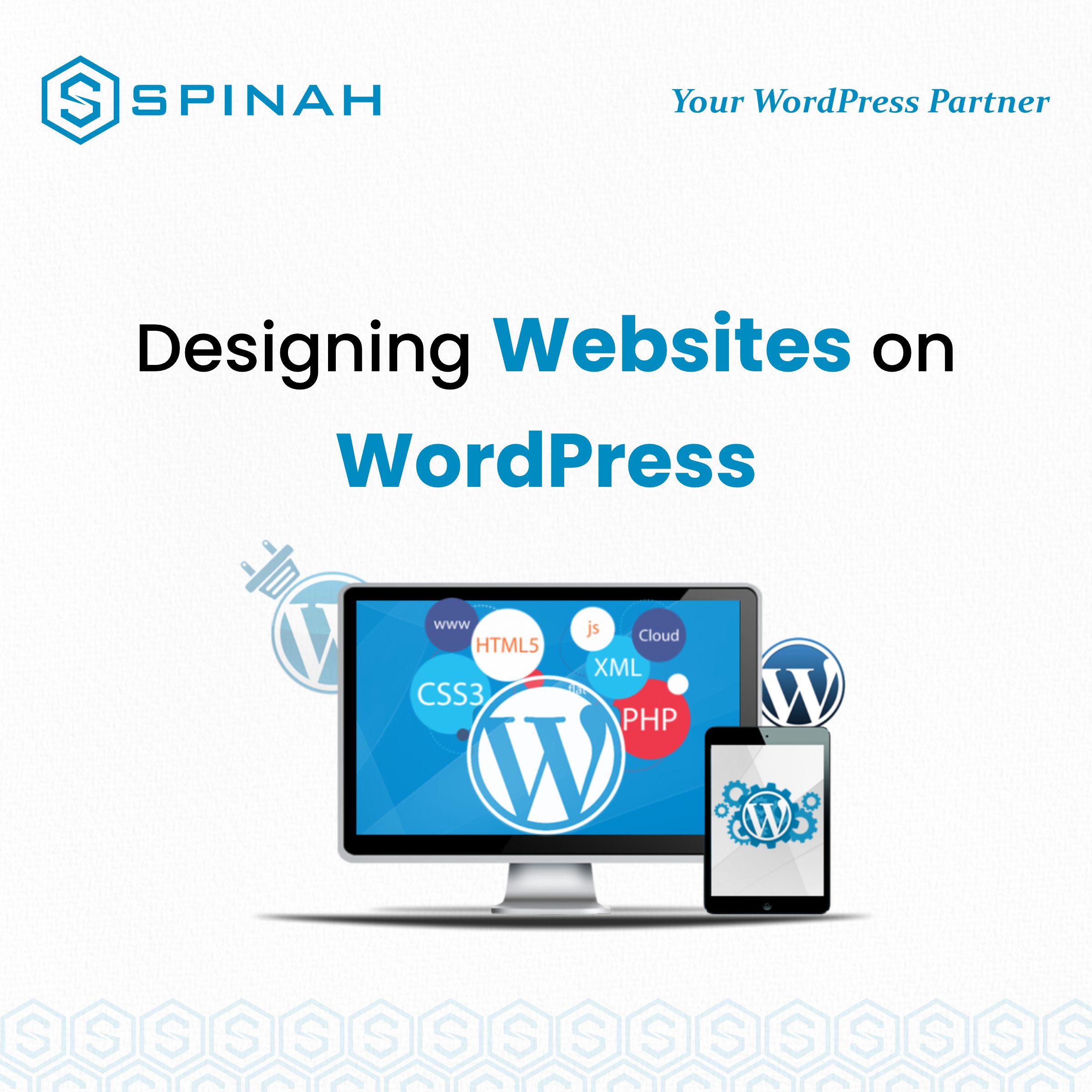Designing a professional website on WordPress can be a daunting task, but with the right approach, it can be a fun and rewarding experience. A well-designed website is essential for any business, as it serves as an online representation of your brand and a valuable tool for reaching new customers and building relationships with existing ones.
When creating a website on WordPress, it’s important to start by carefully planning the overall design and structure of your site. This includes deciding on the layout, color scheme, and overall aesthetic that will best reflect your brand and its values.
To help you create a professional website on WordPress, we have put together a step-by-step guide that covers everything from choosing a theme and customizing your design, to optimizing your site for search engines and adding essential features like contact forms and e-commerce functionality. So let’s get started!
The Importance of Creating a Professional Website on WordPress
Creating a professional website on WordPress is essential for any business, as it serves as a valuable tool for reaching new customers and building relationships with existing ones.
A well-designed website not only reflects the values and aesthetics of a brand but also showcases the products and services offered. Additionally, a professional website on WordPress can provide several benefits to businesses including:
Increased Visibility
A professional website on WordPress can help increase your online visibility by making it easier for customers to find your business through search engines. A well-optimized website can also increase your search engine rankings and drive more traffic to your site.
Credibility
A professional website on WordPress can help establish credibility and trust with potential customers. Having a well-designed website can showcase your business’s experience and expertise, which can help establish trust and credibility with potential customers.
Increased Sales
A professional website on WordPress can help increase sales by providing customers with a seamless online shopping experience. Owning an e-commerce website can help businesses reach a wider audience and sell products and services online.
Cost-effective
Creating a professional website on WordPress is relatively inexpensive and can be a cost-effective way to reach a wide audience. The platform is open-source and free, and there are many free and paid themes and plugins available to help businesses create professional websites quickly and easily.
Flexibility
WordPress is a highly flexible platform, and it can be customized to suit the needs of any business, no matter how large or small. It’s easy to add, remove or update content, images, and videos, allowing businesses to keep their website updated and relevant.
Designing Website on WordPress.com and WordPress.org
You can either design a website on WordPress.com, the free version of WordPress, or WordPress.org, the self-hosted version of WordPress.
WordPress.com is a great option for beginners as it’s free and easy to use. However, if you want more features and customization options then you’ll need to go with the self-hosted version of WordPress, known as WordPress.org.
WordPress.org allows you to customize and extend your website in any way you like, but it requires more technical knowledge and experience than the free version of WordPress. It also requires users to purchase a domain name and web hosting package, which can add up over time.
Step-By-Step Guide for Designing a Website on WordPress.com
Designing a website on WordPress.com can be a simple and straightforward process with the right guidance.
Here is a step-by-step guide to help you create a professional website on WordPress.com:
Step 1: Sign up for a WordPress.com Account
To start, you’ll need to create an account on WordPress.com. Go to the website and click on the “Get Started” button. Fill out the registration form with your email address and password.
Step 2: Choose a Template
Once you’ve created your account, you’ll be prompted to choose a template for your website. WordPress.com offers a variety of templates to choose from, sorted by category.
You can preview each template by clicking on the “Live Demo” button. Once you’ve chosen a template, click “Select” to continue.
Step 3: Customize your Template
Once you’ve selected a template, you’ll be taken to the customization page where you can edit the template to suit your needs. You can change the layout, color scheme, font, and other elements of the template.
Step 4: Add Content
Once you’ve customized your template, you can start adding content to your website. This can include text, images, videos, and other media. You can also create pages and posts to organize your content.
Step 5: Publish your Website
Once you’ve added all of your content, you’re ready to publish your website. Click the “Publish” button to make your website live. Your website will now be accessible to the public at the URL you selected during the registration process.
Step 6: Customize your Website Settings
You can further customize your website by accessing the settings section. Here you can change your website’s title, description, and other settings. You can also add a custom domain if you have one.
Step-By-Step Guide for Designing a Website on WordPress.org
Designing a website on WordPress.org can be a little more complex than using WordPress.com, but with the right guidance, it can be a fun and rewarding experience. Here is a step-by-step guide to help you create a professional website on WordPress.org:
Step 1: Purchase a domain name and Hosting
Before you can start designing your website, you’ll need to purchase a domain name and hosting. There are many options available, and you can choose the one that best suits your needs.
Step 2: Install WordPress
Next, you’ll need to install WordPress on your hosting account. This can usually be done through your hosting provider’s control panel. If you’re not familiar with the process, your hosting provider should be able to help you.
Step 3: Choose a Theme
Once WordPress is installed, you can choose a theme for your website. WordPress.org has a vast library of both free and paid themes to choose from. You can preview each theme by clicking on the “Live Preview” button. Once you’ve chosen a theme, click “Activate” to continue.
Step 4: Customize your Theme
Once you’ve activated your theme, you can customize it to suit your needs. You can change the layout, color scheme, font, and other elements of the theme.
Step 5: Add content
Once you’ve customized your theme, you can start adding content to your website. This can include text, images, videos, and other media. You can also create pages and posts to organize your content.
Step 6: Install Plugins
WordPress.org allows you to install plugins to add additional functionality to your website. You can find a variety of free and paid plugins in the WordPress repository.
Step 7: Publish your Website
Once you’ve added all of your content and installed any necessary plugins, you’re ready to publish your website. Click the “Publish” button to make your website live. Your website will now be accessible to the public at the URL you selected during the registration process.
Requirements for Search Engine Optimization of a Website
Optimizing your site for search engines is crucial for driving traffic and boosting your online presence. These are the following steps to follow:
Mobile Friendly
Make sure the site is mobile-friendly by using a responsive design that adjusts to different screen sizes or by creating a separate mobile version of the site.
Fast Loading
Optimize the site’s loading speed by reducing the size of images and other elements, using a content delivery network (CDN), and minimizing the use of code and plugins.
Easy Navigation
Ensure easy navigation by organizing the site’s content into clear, logical categories and using a clear, consistent site structure. Use clear headings and labels, and include a search bar if possible.
Use Keywords
Make sure to use keywords in the site’s title tags, meta descriptions, and throughout the content, but don’t overdo it as it can be considered as keyword stuffing.
Use Structured Data
Use structured data in the site’s code to help search engines understand the content and how it’s organized, and also to appear in rich results.
Target Audience
Create high-quality and unique content that is relevant to your target audience and regularly update your site with fresh content.
High-Quality Backlinks
Build high-quality backlinks from other sites to yours, this signals to search engines that other sites consider your site to be valuable and authoritative.
Use Webmaster Tools
Use webmaster tools and analytics to monitor your site’s performance and make adjustments as needed.
How to Choose a Theme That Best Reflects Your Brand’s Values
Another major thing to consider when creating your website is the theme. A theme is a pre-designed template that sets the overall layout and style of your website. WordPress has a vast repository of free themes, and you can also purchase premium themes from various marketplaces.
The theme you choose should be visually appealing, responsive, and compatible with the plugins you plan to use.
Understand Your Brand’s Values
Identify the core values and message that you want to convey through your website and make sure the theme aligns with those values.
Consider the Design Style
Look for a theme that reflects your brand’s design style. If your brand is more traditional, consider a classic layout, while a more modern brand might prefer a clean and minimalistic design.
Think About Functionality
Consider the functionality that your website needs and choose a theme that offers those features. For example, if you plan to include an e-commerce store on your website, make sure the theme is compatible with an e-commerce plugin.
Look For Flexibility
A flexible theme will allow you to customize the design and layout of your website to match your brand’s aesthetic. Choose a theme that is easy to customize and offers a variety of options for changing colors, fonts, and layouts.
Check the Reviews and Ratings
Before making a final decision, check the reviews and ratings of the theme to see what other users have experienced. This will give you a better idea of the theme’s performance and compatibility.
Test the Theme
Once you’ve narrowed down your options, test the theme on different devices to see how it looks and performs. Make sure the theme is responsive and looks good on both desktop and mobile devices.
Consider the Theme’s Support and Updates
Choose a theme that is actively supported and regularly updated to ensure that it’s compatible with the latest version of WordPress and other plugins you’re going to use.
FAQs for Designing Website on WordPress
WordPress is a content management system (CMS) designed to create and manage websites. It is an open-source platform, which means it is free to use and customize.
The first step is that you install the WordPress software on your web server. Once the software is installed, you can choose a theme (a pre-designed template) and customize it to suit your brand and website’s needs. You can also use plugins to add additional functionality to your website.
No, you do not need to know how to code to design a website on WordPress. There are many themes and plugins available that allow you to customize your website without any coding knowledge. However, some advanced customization may require knowledge of coding.
The cost of designing a website on WordPress can vary depending on your needs. The cost of the domain name, hosting, and theme must be considered. The cost of a premium theme, custom design and/or plugin can also be added.
Yes, you can use your own custom design for your WordPress website. You can either hire a designer to create a custom theme for you or create one yourself using a theme development tool like Elementor.
Final Thoughts
Designing a professional website on WordPress can be a simple and cost-effective process. By understanding the basics of WordPress, choosing a theme that reflects your brand’s values, and customizing it to suit your needs, you can create a website that is both visually appealing and functional.
By understanding the importance of mobile-responsiveness, fast loading speeds, and easy navigation, you can also create a website that is optimized for both users and search engines.
Remember to test your website on different devices and keep it updated, and to look for support and updates for the theme and plugins you use. With the right approach, you can create a website that will help you achieve your goals and reach your target audience.











